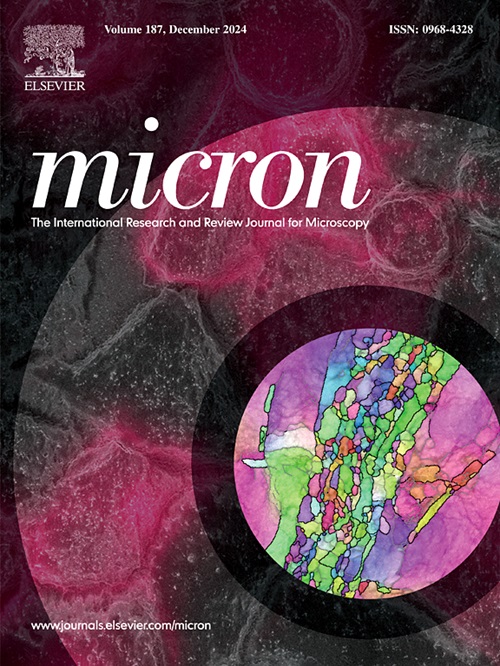Direct monitoring of the enzymatically sequestering and degrading of PET microplastics using hyperspectral Raman microscopy
IF 2.5
3区 工程技术
Q1 MICROSCOPY
引用次数: 0
Abstract
Microplastics are commonly referred to as tiny plastic fragments polluting our environment, although their nanometric forms have also been found in our drinking water supplies and many living systems. Their removal is relevant for preserving our health and sustainability and is being pursued according to many different strategies, including filtration through selective porous materials or agglomeration using flocculant agents. An alternative nanotechnological approach described in this paper deals with the capture and degradation of micro and nanoplastics by enzyme-immobilized magnetic nanoparticles. Magnetic nanoparticles (Fe3O4) were functionalized with polydopamine (PDA) and Lipase enzyme straightforwardly to generate agents capable of removing and degrading µPET from an aqueous solution. In addition to synthesizing and characterizing the Fe3O4@PDA-Lipase nanoparticles and performing the µPET degradation, the novelty encompassed in this work is the successful use of confocal Raman microscopy to monitor the process, in real-time, through in situ hyperspectral images.
利用高光谱拉曼显微镜直接监测 PET 微塑料的酶封存和降解过程。
微塑料通常是指污染我们环境的微小塑料碎片,尽管在我们的饮用水供应和许多生物系统中也发现了纳米形态的微塑料。清除微塑料与保护我们的健康和可持续发展息息相关,目前正在采用许多不同的策略,包括通过选择性多孔材料过滤或使用絮凝剂聚结。本文介绍的另一种纳米技术方法是利用酶固定的磁性纳米粒子捕捉和降解微纳米塑料。磁性纳米颗粒(Fe3O4)与聚多巴胺(PDA)和脂肪酶直接功能化,生成了能够从水溶液中去除和降解 µPET 的制剂。除了合成和表征 Fe3O4@PDA-Lipase 纳米粒子以及进行 µPET 降解之外,这项工作的新颖之处还在于成功地使用了共焦拉曼显微镜,通过原位高光谱图像实时监测这一过程。
本文章由计算机程序翻译,如有差异,请以英文原文为准。
求助全文
约1分钟内获得全文
求助全文
来源期刊

Micron
工程技术-显微镜技术
CiteScore
4.30
自引率
4.20%
发文量
100
审稿时长
31 days
期刊介绍:
Micron is an interdisciplinary forum for all work that involves new applications of microscopy or where advanced microscopy plays a central role. The journal will publish on the design, methods, application, practice or theory of microscopy and microanalysis, including reports on optical, electron-beam, X-ray microtomography, and scanning-probe systems. It also aims at the regular publication of review papers, short communications, as well as thematic issues on contemporary developments in microscopy and microanalysis. The journal embraces original research in which microscopy has contributed significantly to knowledge in biology, life science, nanoscience and nanotechnology, materials science and engineering.
 求助内容:
求助内容: 应助结果提醒方式:
应助结果提醒方式:


